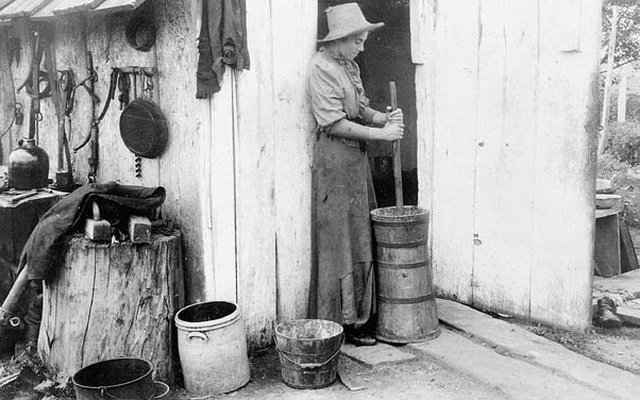Churning is the process of shaking up cream or whole milk to make butter, usually using a butter churn. In Europe from the Middle Ages until the Industrial Revolution, a churn was usually as simple as a barrel with a plunger in it, moved by hand. These have mostly been replaced by mechanical churns.
Butter is essentially the fat of milk. It is usually made from sweet cream (that is, cream skimmed from milk rather than whey). In the USA, Ireland, the UK and the Nordic countries, salt is usually added to it. Unsalted (sweet) butters are most commonly used in the rest of Europe. However, it can also be made from acidulated or bacteriologically soured cream. Well into the 19th century butter was still made from cream that had been allowed to stand and sour naturally. The cream was then skimmed from the top of the milk and poured into a wooden tub.
Buttermaking was done by hand in butter churns. The natural souring process is, however, a very sensitive one and infection by foreign microorganisms often spoiled the result. Today's commercial butter making is a product of the knowledge and experience gained over the years in such matters as hygiene, bacterial acidifying and heat treatment, as well as the rapid technical development that has led to the advanced machinery now used. The commercial cream separator was introduced at the end of the 19th century, the continuous churn had been commercialized by the middle of the 20th century.
